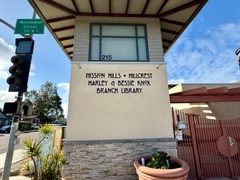
Signaling it may be time for a change, the San Diego Lifeguard Union voted overwhelmingly Dec. 6 to split from the San Diego Fire Department and become its own separate “Marine Safety Department.”
The vote of the lifeguard’s union, with 92 percent of the 102 eligible lifeguards casting ballots, was 76 in favor of leaving SDFD, 18 opposed.
“The 95 percent turnout itself was unprecedented,” said Lifeguard Union chief Ed Harris, who has vocally opposed department changes made by Fire Chief Brian Fennessy.
“We are very concerned about the weather conditions that have created an extreme fire threat,” said Monica Munoz, SDFD spokesperson, responding to the lifeguard union’s vote to disengage from the fire department. “We are laser focused on this effort, and not union issues at the moment.”
Following the union vote, Harris said the dispute is not about personalities, but rather about what’s best ultimately for both San Diego firefighters and lifeguards.
“This isn’t about Ed Harris versus chief Fennessy,” Harris said. “You can remove all the names, and at the end of the day, it’s the structure of the department that needs to change.”
Fennessy altered how radio dispatch works, with all water-related 911 calls now going first to the fire department instead of directly to lifeguards. Harris contends that communications switch delays lifeguards’ emergency response times, threatening public safety.
Fennessy countered that Harris, a former City Councilmember, was guilty of political grandstanding and that the proposed change was not needed, and would not streamline or improve safety services.
Harris pointed out fire chiefs “change every two or three years,” adding, the equipment used, and the roles of the two departments, are mutually exclusively in important ways.
“They (fire) don’t know what we (lifeguards) do, and we don’t know what they do,” Harris said.
Serge Dedina, mayor of Imperial Beach and a former lifeguard, said his city separated lifeguards out from firefighters into their own department. He characterized the change as a “no brainer.”
“When you’re running a city, departments should do what they do best,” Dedina said. “You wouldn’t have the planning department running accounting or finance. Lifeguards are ocean- and bay-based aquatic professionals. They should focus on that. They need to run their own department. It’s worked out really well for us. The issue is how to ensure people are safe everywhere.”
Harris said the two-in-one SDFD is already substantially differentiated.
“We (lifeguards) already have a separate budget,” he said. “We’ve always operated independently under (city) Park and Recreation.”
Harris said the game plan now is for lifeguards to begin lobbying local plan groups and town councils, the mayor and the City Council to garner support for lifeguards becoming their own independent department.
Harris said there’s no animosity between the two departments.
“Fire is a very important large department,” he said. “The lifeguards are a very important small department. We are experts, and should be led by experts. This is a win-win for everyone.”
The lifeguard union chief said separating fire and lifeguard services needn’t be a long, drawn-out battle.
“It can be as simple as the mayor deciding to do a reorganization, basically change the organizational chart,” he said adding, “We believe that’s worth a fight.”
The City of San Diego employs approximately 102 full-time professional Lifeguards, adding up to 200 highly trained seasonal Lifeguards annually. These expert safety professionals execute 7,000 to 9,000 water and cliff rescues annually. They provide a literal life support system to San Diego’s beach tourism economy, which makes up about one-third of the region’s economic input.












Discussion about this post